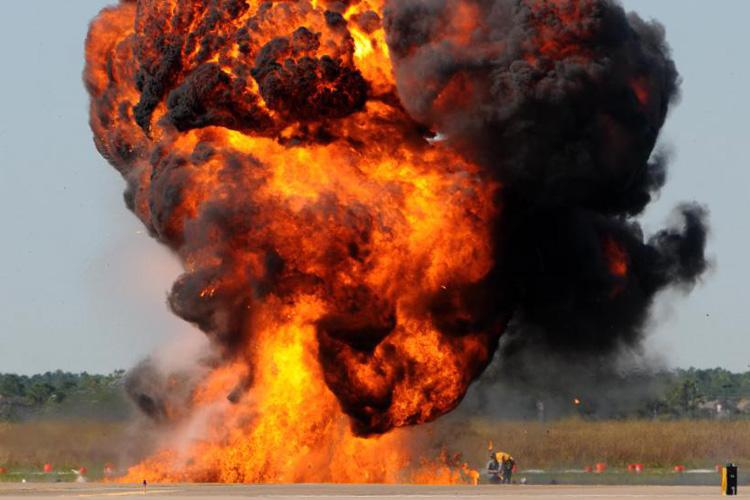A mass of solid flammable materials heats up and burns slowly due to the limited surface area exposed to oxygen and thus, the energy is produced in a gradual and harmless manner. Things are quite different when the mass of material is fine dust and mixes with the air to form a dust cloud. In this scenario, the surface area exposed to the air is large and if ignition occurs, the materials burn with great rapidity, and the energy is released all at once.
Explosive Concentrations
Not all mixtures burn with explosive violence. There has to be a certain range of concentration of dust in the air for an explosion to happen and if the mixtures are below or above this range, it cannot explode. The lowest dust concentration causing an explosion is known as lower explosive limit and the concentration above which an explosion can occur is the upper explosive limit.
For most flammable dust, 30 grams per cubic meter is the lowest explosive limit. This seems like insignificant concentration but in the appearance of a cloud of dust, the concentrations look like very dense fog. The upper explosive limits are not well defined.
The most damaging explosions are produced when the oxygen present is closer to the levels that result in complete combustion.
Ignition of Dust Clouds
For a dust explosion to take place, there has to be an ignition. A mode of ignition can be a hot surface, a mechanically generated frictional spark or an electric spark.
Effects of Dust Explosion
The heat produced by the burning of dust particles causes an increase in pressure at the walls of the vessel with the cloud of dust. The effects of this pressure are the main cause of injuries and deaths to persons who are responsible for handling materials that produce dust.
The first explosion causes other dust in the facility to be suspended in the air. This is adding fuel to the fire and leads to a devastating second explosion.
A dust explosion leaves fires that were started by the dust flame, implosion effects on the plant and building and the compromise of emergency exit and lighting.













